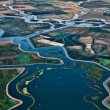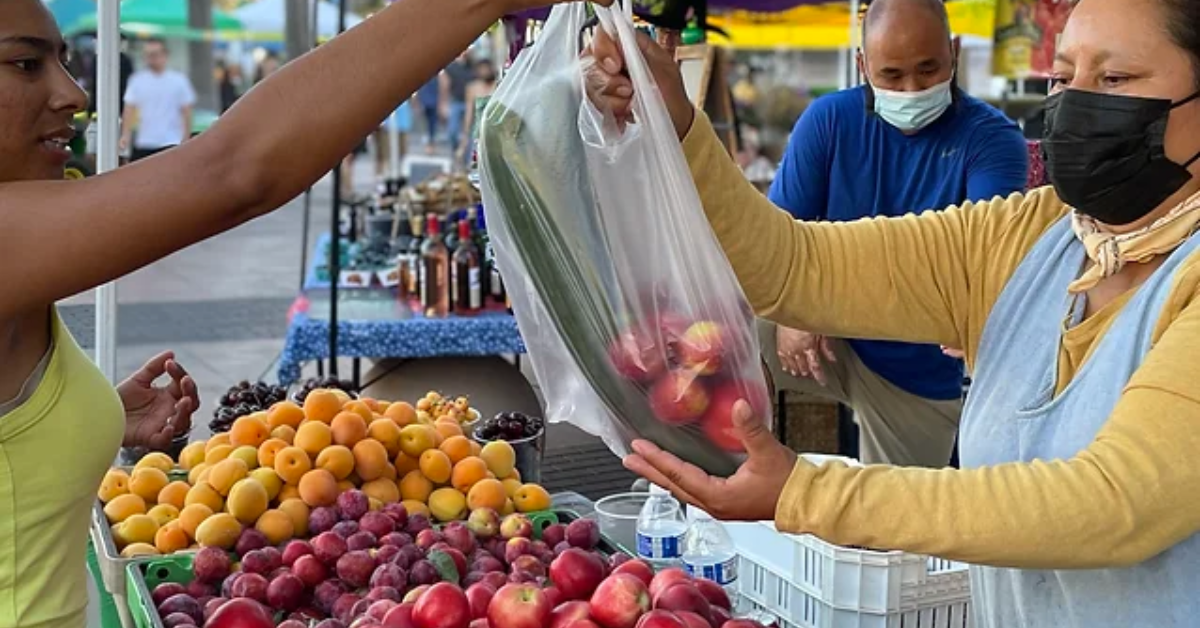After several years of severe drought, the intense storms over the last week would seemingly be a godsend to California and go a long way toward fixing the state’s water problems.
But the opposite is happening as the state is flushing out the vast majority of the incoming water into the ocean.
The big picture: Monday’s unrelenting rainfall resulted in 101,433 cubic feet per second of water inflow into the Sacramento-San Joaquin Delta, according to data provided by the Bureau of Reclamation. The rainy first week of the year averaged around 85,000 cubic feet per second of water inflow.
- The latest available data recorded Tuesday’s inflow total 117,603 cubic feet per second.
- Yet on Monday, 95,980 cubic feet per second of water was flushed out of the delta into the Pacific Ocean, leaving a net of five percent of the incoming water to remain in the delta to be pumped and exported throughout the state.
- The three-day average for delta water exports currently sits at six percent, meaning more than 90 percent of the incoming water is being either being retained in the Delta or (in the overwhelming majority case) flushed out into the San Francisco Bay.
The backstory: The intense flushing of water from the Delta to the Bay – rather than by pumping to Central Valley farms, storage facilities, and southern California communities – is driven by a 2019 legal document known as an “Incidental Take Permit.”
- The document, which was designed by the Newsom administration to counter a sweeping (and now-rescinded) 2019 update to Federal environmental rules governing the operation of the Sacramento-San Joaquin Delta, requires flushing of water when Delta flow intensifies between December 1 and January 30.
The first flush provisions of the permit are triggered in two scenarios:
- When the three day running average of water flowing into the Delta via the Sacramento River at Freeport meets or exceeds 25,000 cubic feet per second and turbidity in those flows meets or exceeds 50 Nephelometric Turbidity Units
- Or, in the alternative, the Smelt Monitoring Team (an amalgam of representatives from the U.S. Fish and Wildlife Service, California Department of Fish and Wildlife, Bureau of Reclamation, Department of Water Resources, and State Water Resources Control Board) determines that conditions pose a high risk of delta smelt migration into areas of entrainment.
- Sources told The Sun that the first flush provisions were initially triggered on Jan. 3.
- Once triggered, the Department of Water Resources is to reduce exporting water out of the Delta south into the San Joaquin Valley for 14 consecutive days.
What they’re saying: In response to the current crush of storms and on-going flush operations, California Republicans – including Rep. David Valadao (R–Hanford), Rep. John Duarte (R–Modesto) and Rep. Tom McClintock (R–Elk Grove) – sent a letter to President Joe Biden and California Gov. Gavin Newsom urging them to waive the impediments to the delta pump operations to ensure that none of the current rainfall goes to waste.
- The lawmakers also asked Biden and Newsom to prioritize and expedite water storage projects.
- “The past few years of catastrophic man-made drought have crushed California families and farms, and with supply chain disruptions further hamstringing our agricultural producers, we have a moral obligation to provide Californians any relief that is within our control,” the lawmakers wrote. “Government regulations should not and must not deny our constituents critical water from these storms. While we cannot make it rain, we must take advantage of opportunities to store water when it does and maximize what can be moved at all times through the Delta for the duration of these storms.”











